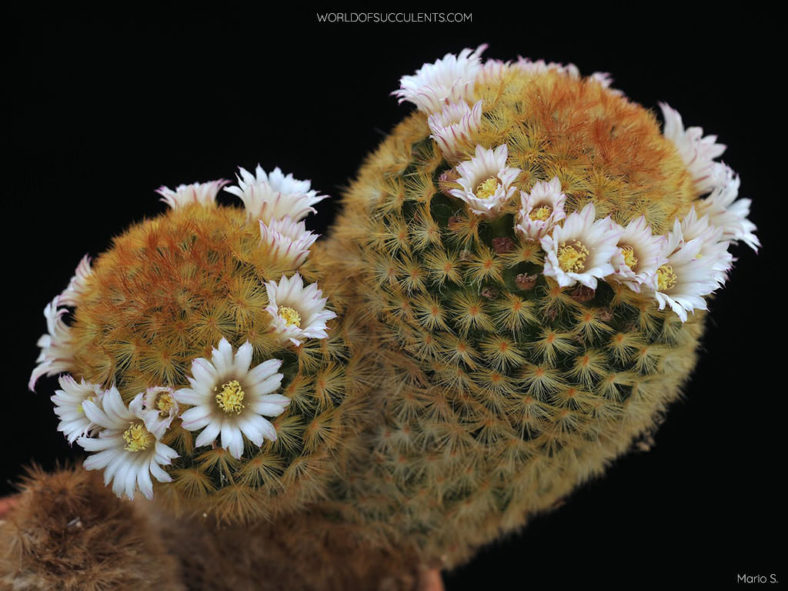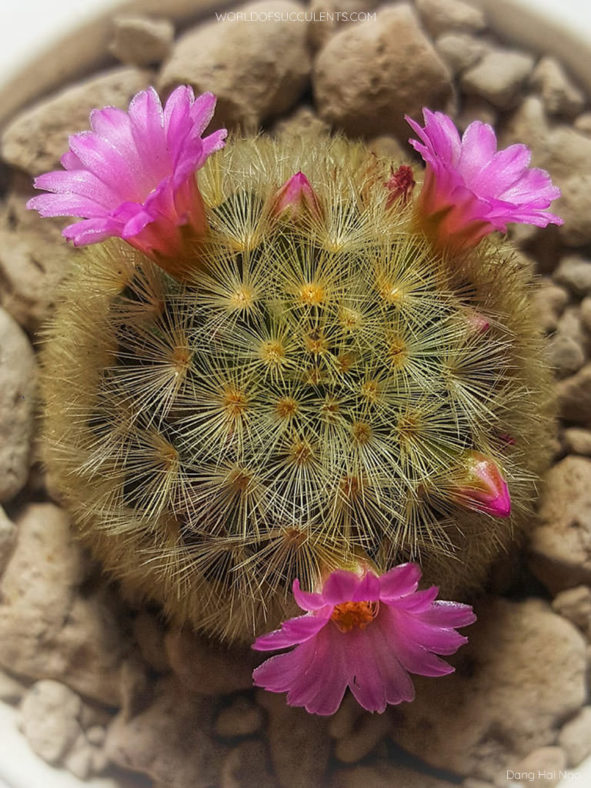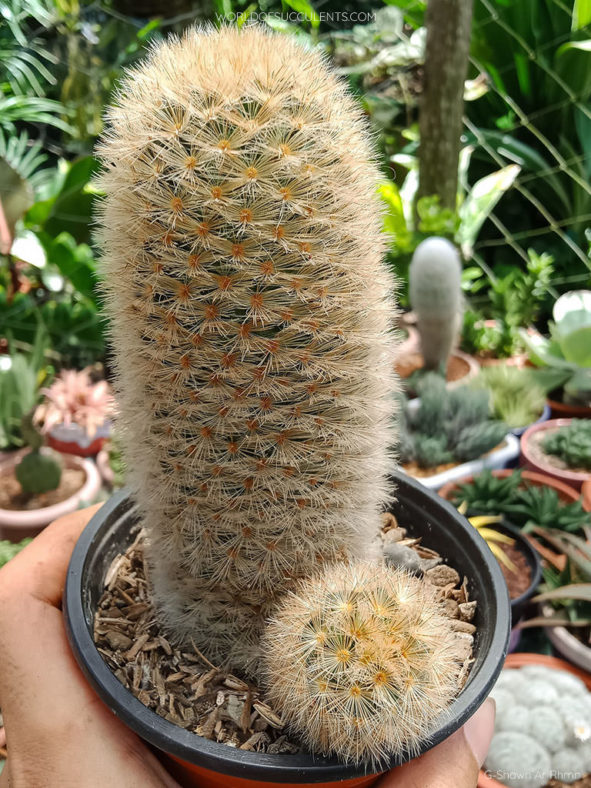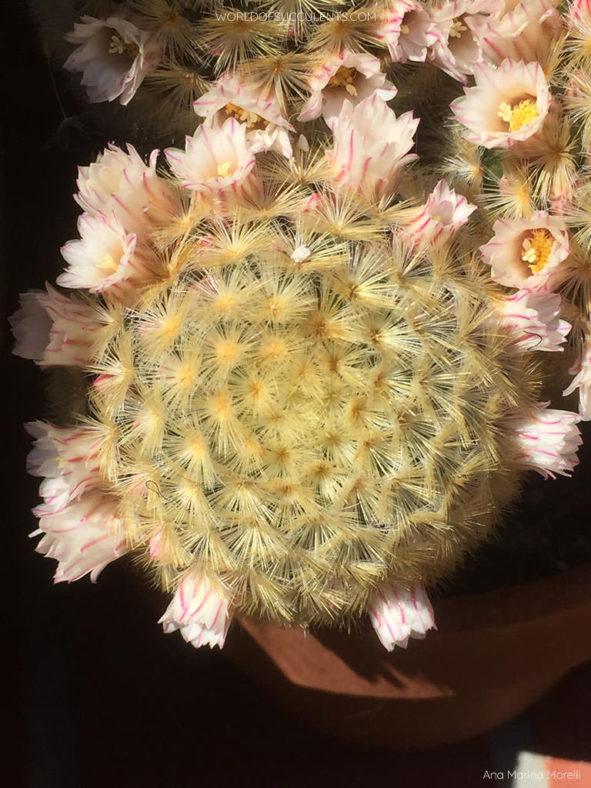Scientific Name
Mammillaria carmenae Castañeda & Núñez
Common Name(s)
Carmen Pincushion Cactus, Isla Carmen Pincushion Cactus
Synonym(s)
Escobariopsis carmenae
Scientific Classification
Family: Cactaceae
Subfamily: Cactoideae
Tribe: Cacteae
Subtribe: Cactinae
Genus: Mammillaria
Etymology
The specific epithet "carmenae" (pronounced "KAR-men-ay") honors Carmen Gonzales-Castaneda, the second wife of the Mexican botanist Marcelino Castañeda y Nuñez de Caceres (fl. 1954).
Origin
Mammillaria carmenae is native to Mexico. It grows in rocky crevices and pine forests in the State of Tamaulipas, between Ciudad Victoria and Jaumave. This species is endangered in its natural habitat due to illegal collection.
Description
Mammillaria carmenae is a small cactus with globose to ovoid stems with conical tubercles, each crowned with a woolly areole bearing clusters of many bristlelike spines. The stems can grow up to 4 inches (10 cm) tall and up to 2 inches (5 cm) in diameter, initially solitary and slowly clumping with age. Each areole bears over 100 creamy-white to pale yellow or golden-yellow radial spines measuring up to 0.2 inches (0.5 cm) long. The central spines are absent.
The flowers are diurnal, creamy-white to pink, or white to pale pink with pink midribs, and appear towards the apex of each stem in late winter and early spring. They can reach a length of 0.5 inches (1.2 cm). The fruits are green and contain tiny black seeds.

How to Grow and Care for Mammillaria carmenae
Light: Plant this cactus in an area of your garden that receives 4 hours of direct sunlight daily. If you are growing M. carmenae indoors, place it near the brightest window in your home or office to ensure it receives enough light. Place the pot on the balcony or in the garden for extra light from spring to fall, if possible.
Soil: M. carmenae requires a soil mix that provides root aeration and good drainage, whether grown outdoors or indoors. Use a commercial cactus potting mix, or create your own.
Temperature: This cactus is heat-tolerant but not cold-hardy. M. carmenae can withstand temperatures as low as 30°F (-1.1°C). USDA Plant Hardiness Zones 10a to 11b, 30°F to 50°F (-1.1°C to 10°C).
Watering: From spring to fall, water deeply and wait for the soil to dry before watering again. Never let the pot sit in water. Suspend watering in the winter.
Fertilizing: M. carmenae can benefit from fertilizing during the growing season. Apply a water-soluble fertilizer for cacti and other succulents. Suspend feeding during the winter when the plant goes dormant.
Repotting: Repot every two or three years into a slightly larger pot. The best time to repot your M. carmenae is late winter or early spring, but the repotting process can be done almost any time of the year.
Propagation: There are two easy ways to propagate M. carmenae: by seeds or by dividing offsets. The best time to remove offsets is in spring and summer. Sow the seeds in late spring or summer.
Learn more at How to Grow and Care for Mammillaria.
Toxicity of Mammillaria carmenae
M. carmenae is considered non-toxic to both humans and pets.
Links
- Back to genus Mammillaria
- Succupedia: Browse succulents by Scientific Name, Common Name, Genus, Family, USDA Hardiness Zone, Origin, or cacti by Genus
Photo Gallery
Click on a photo to see a larger version.


